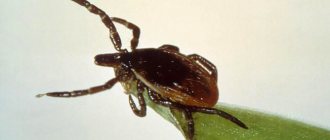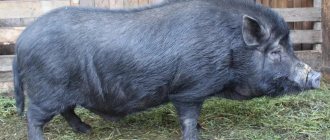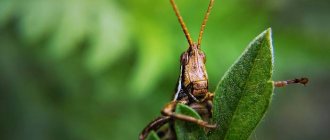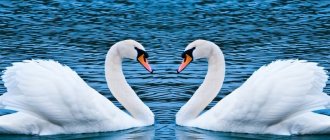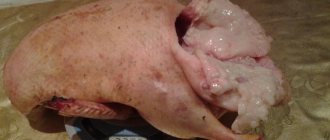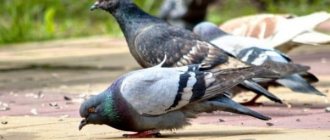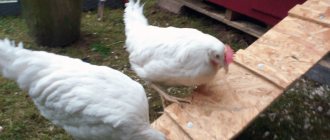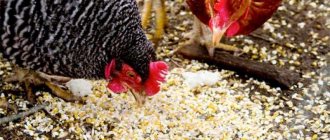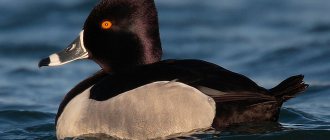More than two hundred seabirds live on the coasts, some come only for the winter, while others nest permanently. Let's take a closer look at some species of birds that prefer habitats on seashores.
Gull
This bird has a large number of species and subspecies throughout the planet. Let us dwell in detail on those that can be observed on the coast of Southern Russia.
Mediterranean gull.
A white bird with a gray back and wings, and darker patterned underwings. A large, yellow beak, and the same color of paws, also yellow eyes with a red edging. They nest on rocky cliffs, and can even build a nest on a multi-story building. They feed on everything, from rodents to carrion, and are capable of destroying the nests of their relatives.
Herring gull.
It is distinguished by a powerful yellow beak, curved at the base with a red dot. Pinkish-brown paws, white feathers with silver wings. This bird can weigh up to one and a half kilograms, which is quite a lot for a seagull. Just like many other species of gulls, it is omnivorous, can steal fish from fishing nets, eat carrion, and also attacks if a person comes close to the nest.
Black-headed gull.
Another large species of seagull, among seabirds, up to seventy centimeters in size and up to two kilograms in weight. Distinctive feature: completely black head and orange beak with black edging at the base. The back and wings are light gray, the rest of the plumage is white. There is also a white edging around the eyes. Laughing gulls live in large colonies; in case of danger, they line up in a long line in front of a potential enemy and scream shrilly.
Petrel
This bird appears off the coast of the Azov and Black Seas only for the winter. They fly from the shores of the Aegean Sea, Bermuda, North Africa and other places. The upper color is brown with gray sides, the lower part of the tail and paws are also gray. Narrow, long wings with a dark stripe. The bird prefers to stay away from the shore in the open sea.
Albatross
The habitat of these mysterious sea wanderers is the southern hemisphere. But outside of nesting, they can be found in all seas and oceans, except the Arctic Ocean. These are large birds, some individuals are found weighing more than twelve kilograms. The body has thick plumage, a powerful beak, and special protrusions in the mouth that help hold the caught slippery fish. Special floating membranes on the paws are well developed. Flight speed up to eight tens of kilometers per hour. A distinctive feature of albatrosses is their monogamy, as well as their ability to drink sea water.
Cormorant
Amazing birds of the Black Sea, cormorants, owners of a long neck and large wings. The plumage color is black with a metallic tint, the beak is thin and elongated, at the base it looks like a fish hook. Thanks to their beak and nictitating membranes on their eyes, they are professional fishermen and divers. Nests are made on rocks or trees. The diet consists of fish, crayfish, frogs, turtles and sometimes snakes.
Pelican
A white migratory bird with a large orange throat pouch. Some large individuals weigh up to fifteen kilograms. They mainly live in flocks, in which two species, Dalmatian and Pink Pelicans, often mix. They can go without food for about two weeks, if necessary.
Ducks
More than forty-one species of ducks are known in the country, including those that arrive for the winter and those that live here.
Duck dive.
There are several species of ducks, and their distinctive feature is their bright plumage.
Red-nosed Pochard.
These are large birds with a brown head, a bright red beak and paws. They do not dive for food, but simply turn over in the water head down. They feed on small mollusks, crustaceans, insects, and plants.
Sailor.
It differs from other dives by its long tail. Also, it changes its color three times a year. The duck is not very large, weighing up to eight hundred grams, and feeds on crustaceans and insects.
Savka.
This duck has a large head and a blue beak, which is why its second name is blue-nosed. They feed on both animal and plant foods and are excellent divers.
Spotted tern
Another of the coastal seabirds, it is medium in size with a crest on its head and a yellow-black elongated beak. They usually nest in numerous colonies, feed on fish, which they dive from above, and sometimes on mollusks and shrimp.
Swan
It is a fairly large bird, sometimes some individuals exceed thirteen kilograms in weight. All three species of swans existing in Russia have white plumage. The difference between the mute swan is a bare triangle from the eye to the beak and the beak is bright red. They eat plant foods.
Blue-footed booby
This amazing bird simply cannot be confused with any other, thanks to its blue legs. They live only in warm, tropical seas. They feed on fish, for which they dive from rocks into the water, and also snatch fish jumping out of the water. An interesting fact about the gannet is that when a male wants to attract the attention of a female, he performs a funny dance accompanied by whistling.
Phaeton
The bird is about a meter long, half of which is occupied by the tail. They have a long, red beak, which they use to deftly grab fish, jellyfish and other living creatures from the water. They swim well, because their feet are webbed, they can hover in the air when flying, but on land they do not move very deftly.
Magnificent Frigate
These seabirds with the ship's name are a type of pelican. A fairly large bird with a wingspan of 220 cm, a long tail that looks like a large fork and a huge hooked beak. The frigate is capable of flying non-stop for several days in a row and even sleeping in the air. A distinctive feature of males is their bright red color, a large throat pouch that inflates during the mating season.
Dead end
A bright bird up to thirty-five centimeters long, with a round head and a massive, rounded orange beak and orange paws. There is red and gray triangular plumage around the eyes. They feed on fish by diving underwater, while their legs act as a rudder on the surface.
Loon
A waterfowl whose plumage resembles a formal office suit, with a green tint on its throat like a tie. They feed on fish, insects and shellfish.
Some species of seabirds can drink seawater thanks to special glands that remove excess salt. These are the albatross, cormorant, gull, petrel and pelican.
In addition to the birds described above, city birds such as pigeons, crows, sparrows and others are also found on the coasts. When going to the beach promenade in a resort town, take bird food with you. Birds really need this kind of care.
Physics in the animal world: diving birds and their safety system
Some species of seabirds are capable of diving to great depths with very high initial speeds.
Some species of birds dive from a height, plunging into the water without harm to themselves. A person, if immersed in water at the same speed, would receive very serious damage to internal organs and, with a high probability, would die. But birds can easily endure a rapid dive into the depths. This is different, for example, from gannets. Gannets are large birds that freely soar over the ocean and catch fish and squid, diving into water from a height of 10-100 m to a depth of 25 m. The body length of adult individuals of the genus Sula is 71-91 cm, the wingspan is up to 1.5 m , weight 0.7-1.5 kg. When diving, they can reach speeds at the water surface of up to 140 km/h. How are these birds capable of doing this? Gannets have several defense mechanisms in the auditory and visual apparatus and throughout the body. A recently completed study by a group of scientists at Virginia Tech has clarified the situation. The results were published in the Proceedings of the National Academy of Sciences. “We were interested in what happens to birds when they dive into water. The gannets showed incredible results,” says Sunny Jung, one of the research team members. In the course of their work, the researchers studied the biomechanics of gannets during diving. They found that the shape of the bird's head, neck length, and neck musculature effectively resisted the initial resistance and increasing pressure of the water column with depth, preventing the negative effects of high pressure on the bird's thin neck and entire body. The main force acting on the bird's head at the beginning of the dive is resistance. The gannets learned to overcome it without any problems.
Previous studies have focused on the ecological aspects of gannets' predatory instincts. Jang and his colleagues decided to study the mechanism of gannets' immersion in water. A group of scientists was the first to clarify many details of the physics of diving, including the structural features of the body that allow gannets to feel great at great depths. Scientists have created a model of the body and neck (with muscles). Experts also 3D printed copies of gannet skulls. The replicas were created from real skulls provided by the Smithsonian Institution.
Thanks to the “printout,” scientists were able to measure the forces that act on the bird’s head and neck during a dive. To further explore the possibilities of a better one, scientists created a 3D model of the gannet's head and neck. It was decided to make the model simplified, gradually complicating it as the work progressed. The head was placed on a flexible rubberized “neck”. The entire system was then immersed in water several times, testing the diving process of the gannets. The “head” and “neck” were immersed to different depths at different angles. The artificial neck was covered with different materials with different properties. The dive process was filmed with a high-speed camera, which helped establish the truth.
“That's exactly what we did. We found a complex system and decided to simplify it,” says Brian Chang from Wanshington University. The result of the analysis showed that, depending on the geometry of the head, strong pressure on it may have almost no effect, or may seriously damage the health of the bird. Scientists also studied the strength of the neck, which can withstand enormous loads.
“We found that all gannets have heads modified in a special way, which is typical for other birds of the family. This reduces the influence of the water column on the skull. As it turned out, the reason is also that gannets strongly contract their neck muscles before diving, which does not lead to the death of these birds. By contracting the neck muscles, gannets reduce the effect of water resistance on the body.
Biomechanics has allowed scientists to create skeletal models of more than just the gannets discussed in this article. “In our research we focused on gannets and cormorants, which are truly fantastic when it comes to diving hunting.” It turned out that the shape of the head, the properties of the material of the neck, and the speed of entry into the water are of great importance in overcoming water resistance. When diving, the gannet's body takes on an elongated shape, the bird enters the water like an arrow fired from a bow.
The body of gannets is ideally suited for high-speed diving. It is interesting that other members of the family do not have the ability to dive into water, falling from a height and diving.
A person, unfortunately, does not have the ability to protect himself when diving to depth in a matter of minutes, as birds do. But many people like to dive from heights. Nowadays, extreme sports such as water diving from great heights - from bridges, cliffs and other high objects - are becoming increasingly popular. The results of the study obtained by scientists will help develop recommendations for extreme sports enthusiasts to avoid damage when entering the water column.
“We believe that our findings can be used by real high divers,” the scientists say.
Where can I meet
It is worth knowing not only what the black duck with a white beak is called, but also where it can be found. The bird lives in the territories of Eurasia and Africa. Also, its nesting sites are present in all European countries, except for the highlands of Scandinavia and the northernmost points. It is worth noting that rare arrivals were observed in Greenland, on the islands of Labrador, Spitsbergen, and the Faroe Islands. In Russia, the breed is distributed in Karelia and Lake Ladoga, in the Lena basin, throughout Siberia, the Far East and Sakhalin.
In Asia, the black duck with a white head and white beak lives in its middle part and in Kazakhstan, as well as in the northern regions of Pakistan, Afghanistan, partly in India, Mongolia, Bangladesh, China, the Philippines and Myanmar. The coot can be found on many islands of Oceania, Indonesia, New Zealand and Australia. The black duck is also common in some African countries; it flies there for the winter from European countries with cold or temperate climates.
Hatchets and guillemots
The northern seabird is a regular at numerous traditional bird markets. Puffins and guillemots are considered record holders among those that are able to gather in such a densely populated area. Thanks to their short wings, they dive perfectly into the water, providing themselves with food. These representatives can be called the most adapted to sea waters. Their chicks, which do not yet know how to fly, fall from their nests in rocky terrain directly into the waves.
Here they are fed and further grow. Many, of course, die, crashing on the rocky terrain. When cold weather approaches, all the inhabitants of the colonies fly away into the endless expanses of water. Some of the seabirds are migratory. They wait out the cold in warmer regions, then return home. Others are nomadic. Many seabirds fly long distances, sometimes changing latitude, and can only return to their place of birth in a circle. Sometimes the entire life cycle is not enough for such a route.
Birds and their structure
Specialists who have a wealth of knowledge about the characteristic features of a particular species can easily determine how its representatives feed, how they hunt, and in what area they live. The shape and length of the wings are of great importance. Thus, representatives of birds with a small scope are classified as diving species. Whereas birds with long wings most often live in deep ocean areas. For example, the wandering albatross is a bird that travels countless kilometers in hopes of eating. However, representatives of this species over time waste their ability to make long-distance flights. Many of them have already chosen the bays or piers where fishing boats often moor.
Everything in nature tends to adapt to convenience. Why fly into the vast expanses of water if food is so available on the shore? The albatross is a bird that, in the process of evolution, even slightly changed the structure of its wings. Now these beauties often do not use active flight techniques, but have switched to dynamic or inclined soaring. That is, albatrosses simply catch the flow of air masses and maneuver.
Adaptation of waterfowl to aquatic habitats
The bird does not drown thanks to its thick plumage and subcutaneous air sacs. The coccygeal gland, which is located near the tail, secretes fat. The bird applies it to its plumage using its beak. Lubricated feathers repel water, protecting birds from getting wet.
The bodies of waterfowl are dense, flattened in the dorso-ventral direction. This shape gives them stability on the water surface. Most diving species have evolved a thick subcutaneous layer of fat to help avoid hypothermia at low water temperatures. Waterfowl have developed skin membranes on their feet, increasing the overall area. This allows you to quickly move and maneuver in the water.
What do birds eat?
The main part of the diving diet is plant food. Birds dive not to catch fish, but to pluck stems or leaves of algae. The food used is pondweed, algae with a long stem and wide leaves. They are typical for all river reservoirs. Ducks love hornwort, which often floats on the surface of the water and has needle-like leaves. In shallow waters, individuals eat mosquito larvae and fish eggs.
During the mating season and during molting, ducks need protein foods enriched with calcium and phosphorus. Ducks go to deep water in search of fish, crustaceans, and shellfish. In order to get food or catch fish, they are forced to dive, immersing themselves completely under water.
Birds spend a lot of time on the shore. They not only bask in the sun, but also look for plant seeds for themselves. Evening flights to fields with cereal crops are typical for red-nosed ducks. During such flights, birds become targets for hunters.
Igor Nikolaev
auto RU
Ducks take off from the water heavily and ponderously. They quickly work their wings to make a run on the surface of the water. They rise into the air to an average height. They do not move far into the sky even during migratory flights. They can stay in flight for a long time, more than 6 hours. Red-nosed diving ducks reach speeds of up to 80 km/h. They make a loud noise with their wings.
Red-eyed individuals and birds of the pompous subspecies are rarely chosen from the reservoir. They prefer to eat algae and animal food that is close to the surface of the water. They catch fish and small invertebrate animals during the molting period and before mating.
Reproduction
In late February or early March, black ducks begin their mating season. In colder regions, mating starts later - in April or May. At this time, coots become very active. Females emit loud sounds similar to “tyek-tyak”. The voice of males is quieter and dull. Ducks swim quickly, beat up the water with their wings and circle around each other. When a pair is formed, warmer courtship begins. A drake and a duck preen each other's feathers with their beaks, diligently defend their territory from strangers and share food.
The bird makes a nest in the thickets near the shore. It is attached to reeds, reeds, cattails, but at the same time it is in the water. To make it, ducks use grass, branches, down and feathers. The diameter of the nest is from 30 to 40 centimeters, and the height is 11-20 centimeters. Both partners participate in the construction. During this period, the couple becomes especially aggressive and does not allow anyone near their territory. The distance between the nests of two families ranges from thirty to eighty meters.
As a rule, one clutch contains from seven to twelve eggs. It is considered normal for a black duck with a white beak to throw eggs into the nests of neighboring pairs. The shell has a clay or sandy tint, but can also be white. It is covered with small purple or brown dots. The height of the egg is about six centimeters, the diameter is about three centimeters. Both the drake and the duck itself hatch their offspring. However, the female spends more time on the nest. The chicks hatch after 22 days. In one season, a couple can make up to four clutches, in cold climates - one or two clutches.
Varieties of dives
All divers are united not only by the ability to dive under water to a significant depth, but also by body shape, flight characteristics, and lifestyle. Pochard is a medium-sized duck. The body is compact and muscular. Pochards have a large, rounded head. The beak has a slightly flattened plate. The duck's neck is short but thick.
Flight muscles are well developed. A distinctive feature of all diving fish is the membrane of skin on the posterior phalanx of the limbs. The order of ducks includes the following species of ducks: red-eyed duck, red-nosed duck and pampas duck. How do they look? Where do they live?
Red-eyed Pochard
The duck got its name from the bright red color of the iris. The bird's head is a rich chestnut color. Against the background of the plumage, the eyes glow like bright lights. The duck is small in size. Body length no more than 50 cm, weight on average 1.3 kg. Drakes are larger and brighter than females.
Males get their beautiful plumage after the autumn molt. It is necessary to attract females. At the end of the mating season, when the birds have already created a family, individuals experience a change of feathers. Drakes differ from females only in their greater weight:
- The drake's body is chocolate-colored, its wings and sides are piebald, and its belly is white. The chest has a gray tint. The feathers are cast in a muted pink color;
- The feather cover of females is discreet. Ducks are gray. The head does not differ in shade from the body. Eyes can be scarlet or black;
- the mirror in both the female and the male is formed by white flight feathers with a gray edge;
- The duck's beak and metatarsals are bright black.
More on the topic: How to raise blue duck?
Red-eyed diving ducks live in South America, on the shores of the Red Sea, on the African coast of the Atlantic and Indian Oceans. A small population of birds found in Madagascar. Individuals are not migratory. They are not considered game birds. The red-eyed duck is listed in the International Red Book.
Red-eyed Pochard
Red-nosed birds
Red-nosed ducks, like red-eyed ducks, have a bright scarlet iris, but their plumage has more saturated tones. During the mating season, drakes are covered with bright clothes. Their heads, like those of the red-eyed individuals, are chestnut-colored. The back and chest are black with a green tint. The wings, tail feathers and rump are dark. The wings are a light cream color. The mirror is formed by white feathers with a black edging.
The feather cover of females is predominantly brown. The beak of both the drake and females is bright red, narrow, but slightly flattened on the sides. The tip of the nose is bent down. Individuals have a horizontal landing. The tail is lowered and lies on the water. The feathers form a fan.
The main population of ducks is found on the Mediterranean coast. Birds occupy almost the entire Iberian Peninsula. Here individuals lead a sedentary lifestyle. The red-nosed duck also lives in the regions of Central Asia.
Ducks are common on the banks of the Volga, Syr Darya, and Lake Balkhash. A small settlement is located in Western Europe. From European countries and the northern regions of Asia, the duck migrates to the west of China, the south of Kazakhstan, and to the shores of the Mediterranean Sea.
The red-nose pochard weighs 1.7 kg. It is a game bird. The species is not listed in the Red Book. Not only meat is obtained from ducks, but also bright feathers, which are used to make jewelry. Down has high thermal insulation properties. The meat is dark red, the subcutaneous fat is orange. The carcass itself looks unattractive, but all this does not prevent the game from being used for food.
Pampas dive
The duck of this species has a limited, endemic habitat. Ornithologists note small populations of birds in Latin America, on the Falkland Islands in the southwest Atlantic Ocean. Individuals prefer salty water. They are not found in fresh water bodies:
- the plumage is distinguished by a noble silvery tint with small splashes of white;
- the head and chest are dark purple. In the sun the feather has a pink tint;
- belly white;
- flight feathers are light with a black border;
- the iris of the eyes is red. It stands out clearly against the purple background of the plumage.
More on the topic: What is the difference between a coot duck?
The head is small, rounded. The beak is red at the base and has a voluminous growth of horny tissue. The middle of the beak is white, the tip is black. The shape is flatter than that of individuals of other species. Pampas ducks were domesticated by humans, but they are not found in backyards. Birds can be seen in artificial ponds in zoos.


